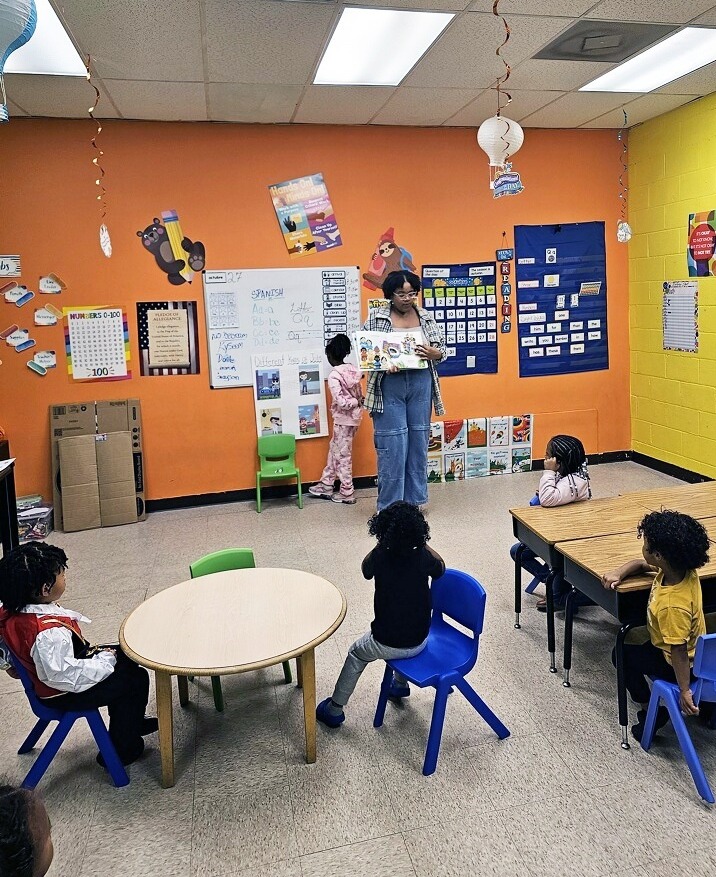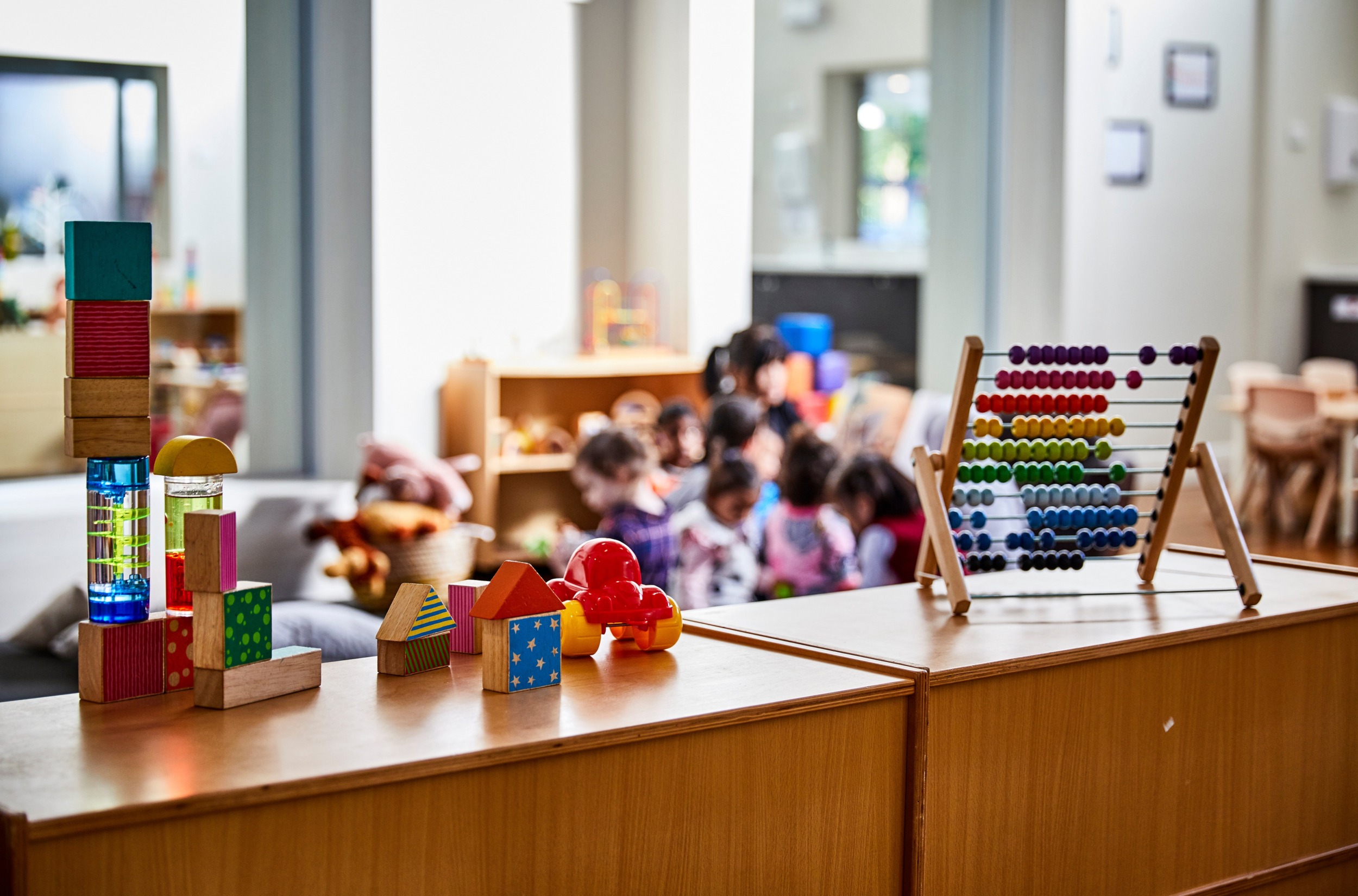The one-way drive to daycare is long enough for Chelsea Chandler and her two children to listen to the entire movie soundtrack for “Encanto.”
Chandler drives two to three hours round trip every day because she can’t find reliable childcare closer to her home in rural Wisconsin.
“I just have no energy by the end of the day,” said Chandler, who spends more on childcare than she does for housing.

Courtesy of Chelsea Chandler
Chelsea Chandler
The economics of the childcare industry have long been strained, with parents like Chandler struggling to find affordable options and childcare providers leaving the industry due to low pay. The already bleak picture could get even worse, early childhood education advocates fear, as a new wave of daycare closures could be coming after the $24 billion from the American Recovery Plan Act (ARPA) that propped up the industry during the pandemic officially ended Sept. 30.
Losing those federal stabilization grants could force more than 70,000 licensed childcare facilities across the country to close, affecting 3.2 million children, a Century Foundation report said.
“Providers for years have struggled to make enough money given the high-cost nature of childcare to pay their staff a livable wage. And a lot of providers used the funding under the American Rescue Plan to increase wages,” said Laura Valle-Gutierrez, a Century fellow who co-wrote the report. “That truly is a big part of how this funding stabilizes the industry because it prevented educators from essentially being forced to walk off the job because they were paid so little.”
[Related: Minnesota expands public funding for childcare]
Some childcare facilities are already closing and, without an infusion of money, some facilities likely will shut down in the next year, Valle-Gutierrez said, adding that the challenges affect the entire industry from home-based daycares to large daycare centers and faith-based facilities.
The foundation’s report called the loss of federal funds a childcare “funding cliff.” Others see a different landscape.

Courtesy of the Century Foundation
Laura Valle-Gutierrez
“Of course, the cliff hit in September. It’s not as if the next day, no one could find childcare,” said
Phoebe Kilgour, communications director for the Campaign for a Family Friendly Economy, which advocates for affordable childcare. “It’s a little bit more like quicksand. It’s a slow and steady decline.”
Meanwhile, to survive, some childcare providers are raising tuition while other facilities operate with empty classrooms because they can’t hire enough staff.
“One of the really big challenges that we’re seeing is that this early educator shortage is going to get a lot worse,” Valle-Gutierrez said. “In the long run, we’ll start seeing more program closures without additional funding … There are going to be really dramatic impacts for states.”
The impact may be lessened in states that have allocated state funds to childcare, she said.
In New Mexico, for instance, voters approved a constitutional amendment in 2022 to permanently fund childcare after a long advocacy push. In other places, like Minnesota, lawmakers are now investing state funds to replace the federal dollars.
The foundation’s report doesn’t take into account the states’ efforts, Valle-Gutierrez said, adding the foundation plans to track the childcare industry post-ARPA.
Walkouts and waitlists
At Kidz With Goals Unlimited, a daycare in Hopewell, Virginia, Juanterria Pope-Browne used her ARPA funding to raise her employees’ hourly pay to $18 an hour, build a fence around the playground and buy a handicapped accessible bus. After the federal funds stopped, she couldn’t afford to keep paying the higher rate: her families can’t afford higher tuition, she said.

Courtesy of Juanterria Pope-Browne
Children in a classroom at Kidz With Goals Unlimited in Hopewell, Va.
She reduced employees’ pay to $15 an hour. Six of her 10 employees quit within two months.
“My staff was gone,” she said. “I had to start over.”
Since then, Pope-Browne has slowly hired replacements. One position she desperately needs is a behavior specialist to work with children who are autistic or having challenges in the classroom. One of the job candidates she interviewed wanted $26 an hour. The position remains unfilled.
In Concord, New Hampshire, Merrimack Valley Day Care Service’s waitlist has skyrocketed to more than 300 names and is currently at about a yearlong wait for the service’s four different sites.
In the busiest time before school starts, Gail Gagne, a staff member at the 180-child business, fields four or five requests a day from parents desperate to find childcare, reading the pleading emails and listening to parents breaking down on the phone.
She won’t give them a false hope. She can only add them to the bottom of the list.
Parents looking at childcare should have already made the arrangements months before giving birth. By the time the child is actually born, they are out of luck.
Gagne knows she is helpless to fix the situation.
“They’ve already started crying because they’ve called other places,” Gagne said. “It’s difficult to listen to them.”
The magic number is eight.
For every new staff member, the business can add enrollment by eight more children. But facilities like hers are struggling to hire and retain employees, said Merrimack Executive Director Marianne Barter, who closed one center she ran for 15 years in 2022 because of a staffing shortage.
[Related: Home-based childcare is a dying business. Here’s why.]
Barter said she was finally able to pay a livable wage and gave staff an extra $10 an hour in hazard pay during the pandemic. (Half of that was funded by ARPA; the other half Merrimack matched. Since ARPA ended, Barter herself made $2.50 of the $10 raise permanent and said she could not afford to pay more.)
“What’s happening is this almost labor movement where childcare workers are no longer willing to work for $12 or $13 an hour to support an entire state’s economy,” Barter said. “We’re going to see it everywhere. People who have loved this work, who find it meaningful and joyful … They realize they could make better money at Target and they will go to Target. They don’t really have a choice.”
Gagne said she doesn’t carry the emotional weight of hearing from so many families in crisis when she goes home at the end of the day. She knows better. That’s how she survived working in the childcare profession for 30 years.
Always on the road
In rural Wisconsin, Chandler is short on options. Chandler’s mother-in-law is retired but doesn’t have the energy in her mid-70s to chase after two young children. A teenage babysitter isn’t very reliable. With only a few home-based daycare providers in the rural town, Chandler couldn’t find anyone she felt comfortable with or who had openings.

Courtesy of Juanterria Pope-Browne
Juanterria Pope-Browne
So every day Chandler drives her electric car on country roads where there’s not a stoplight in sight, just cows and fields, on the journey to Corrine’s Little Explorers Child Care in New Glarus, Wisconsin in the next county over.
Depending on if she drives into Madison to her office or works remotely back at the farm, Chandler is on the road for two or three hours round trip.
“I could be working more. I could be spending more time with the kids doing more enrichment activities or taking them places. I could be doing more home cooking. All kinds of things that I’d rather do than spend time in the car,” Chandler said.
It is a tradeoff. Without this childcare, even if it is far away, Chandler would face tough choices.
Quit a career she is passionate about and worked hard to build? Cut back hours?
Chandler is the director of a climate and energy program at the nonprofit Clean Wisconsin. She and her husband also own a small farm that grows fruits and vegetables for a community supported agriculture venture.
Resigned, Chandler keeps driving and sings along with her children to “We Don’t Talk About Bruno” on the car ride.
When parents do leave their jobs because of a lack of childcare, it hits the government’s coffers and hurts the economy. A new Florida Chamber of Commerce report estimated the state misses out on $911 million annually in tax revenue due to working parents who couldn’t find childcare.
More money
ARPA was like putting a band-aid on an amputation, said Jamee Herbert, CEO of BridgeCare, a software platform that connects providers and families with childcare systems.
“It was holding up an industry that was barely surviving. It was really never sufficient,” said Herbert.
Herbert, Valle-Gutierrez as well as parents and providers are among the advocates calling for a deeper, permanent government investment to reshape the childcare industry now that ARPA has officially sunset.
“The scale of the problem really requires a significant federal investment,” Valle-Gutierrez said.
Meanwhile, providers try to hang on.
“If they drag their feet much longer to fix this problem, the field will not be here to be fixed,” Barter said.
***
Gabrielle Russon is an Orlando-based journalist who covers education, tourism and business.




























